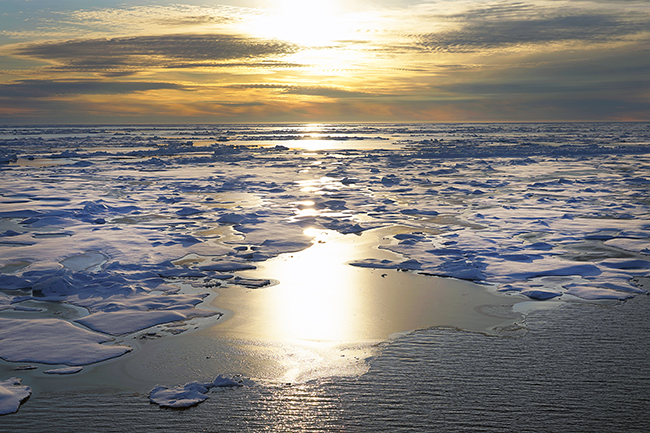
As winter’s brutal grip on the Arctic has begun to loosen, the huge area’s sea ice cowl doubtless reached its most extent for the yr on March 14.
That most unfold of the ice was not as paltry because it has been in some latest years. However in line with the latest analysis from the Nationwide Snow and Ice Knowledge Heart, it was nonetheless 247,000 sq. miles beneath the 1981 to 2010 common.
That is an space of ‘lacking’ ice practically as giant as Texas.
For the file, NSIDC knowledge present that the utmost extent of the ice was fourteenth lowest within the satellite tv for pc file, which extends again to 1979. However that does not inform all the story, as this animation dramatizes:
Whole Arctic sea ice quantity averaged the third lowest on file for the month of February. (The items are hundreds of cubic kilometers. Credit score: Zachary Labe utilizing knowledge from PIOMAS v2.1)
The animation exhibits a unique metric: the quantity of Arctic sea ice — which has declined fairly dramatically. This winter, the thinner, much less voluminous ice apparently was in a position to unfold out and canopy extra territory than in some earlier years.
Now, as spring progresses and temperatures heat, Arctic sea ice will shrivel. In September, it should attain its lowest extent of the yr and start to develop once more. (Final September, it bottomed out as sixth lowest within the practically 45-year satellite tv for pc file.)
Lengthy-Time period Declines in All Months
Due to human-caused world heating, each the utmost and minimal extents of sea ice within the Arctic have been trending downward general.
“The sharpest declines have occurred in the summertime and fall, together with the time of yr when sea ice reaches its annual minimal in September,” writes NSIDC’s Michon Scott. “Though Arctic sea ice extent has not declined as a lot throughout winter months, it has nonetheless proven a steadily reducing pattern. Arctic sea ice extent now displays long-term declines in all months, together with the coldest, darkest months of the yr.”
However we people have not repealed the local weather system’s personal pure variability. So the pattern traces exhibiting the shriveling of Arctic sea ice do not level straight downward. They bump up and down a bit.
The extent of Arctic sea ice within the month of February has declined considerably since 1979, when satellite tv for pc observations started. However as a consequence of pure variability within the local weather system, the drop hasn’t occurred in a straight line. (Credit score: NSIDC)
Some years have seen less-bad declines than others, as is clear within the graph above depicting the pattern in Arctic sea ice extent through the month of February from 1979 by 2024.
A comparability of the extent of Arctic sea ice in March of 1979 and 2023 exhibits a dramatic decline. The magenta-colored line exhibits the long-term common extent of the ice for the month. (Credit score: Pictures from NSIDC, animation by Tom Yulsman)
This animation evaluating the extent of the ice in March of 1979 to March of 2024, cuts by the year-to-year variability and exhibits simply how a lot ice has gone lacking.
Sure, many of the Arctic nonetheless is roofed in sea ice through the lifeless of winter. However an space the dimensions of Alaska that when was frozen over is now ice free.








